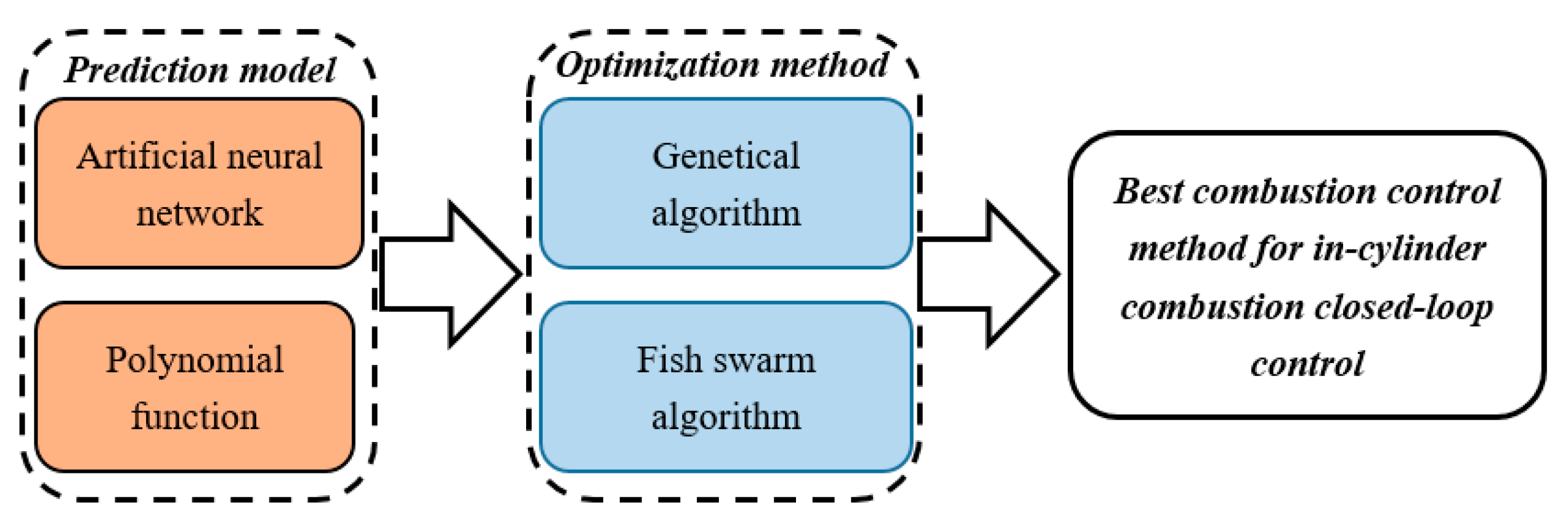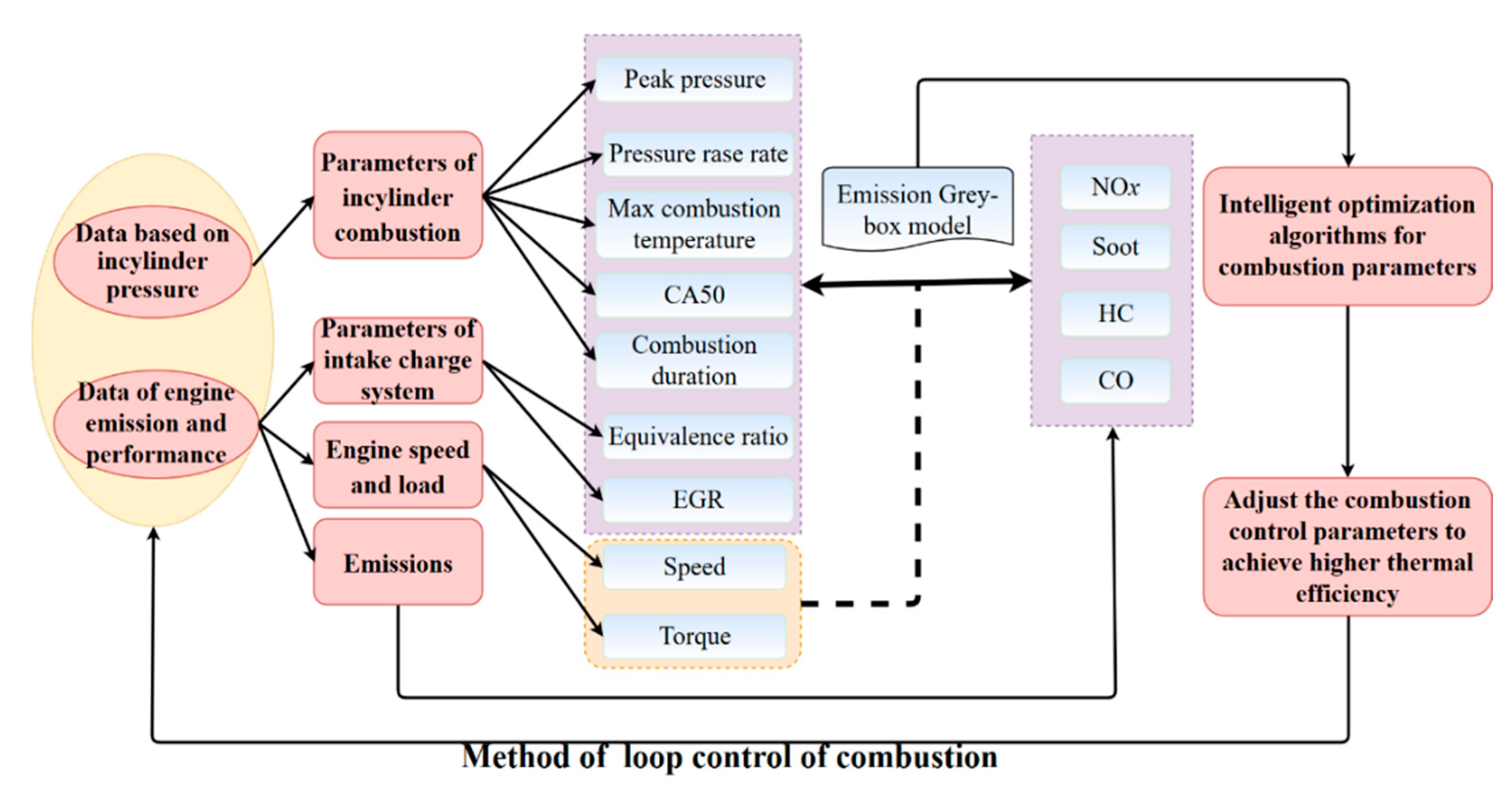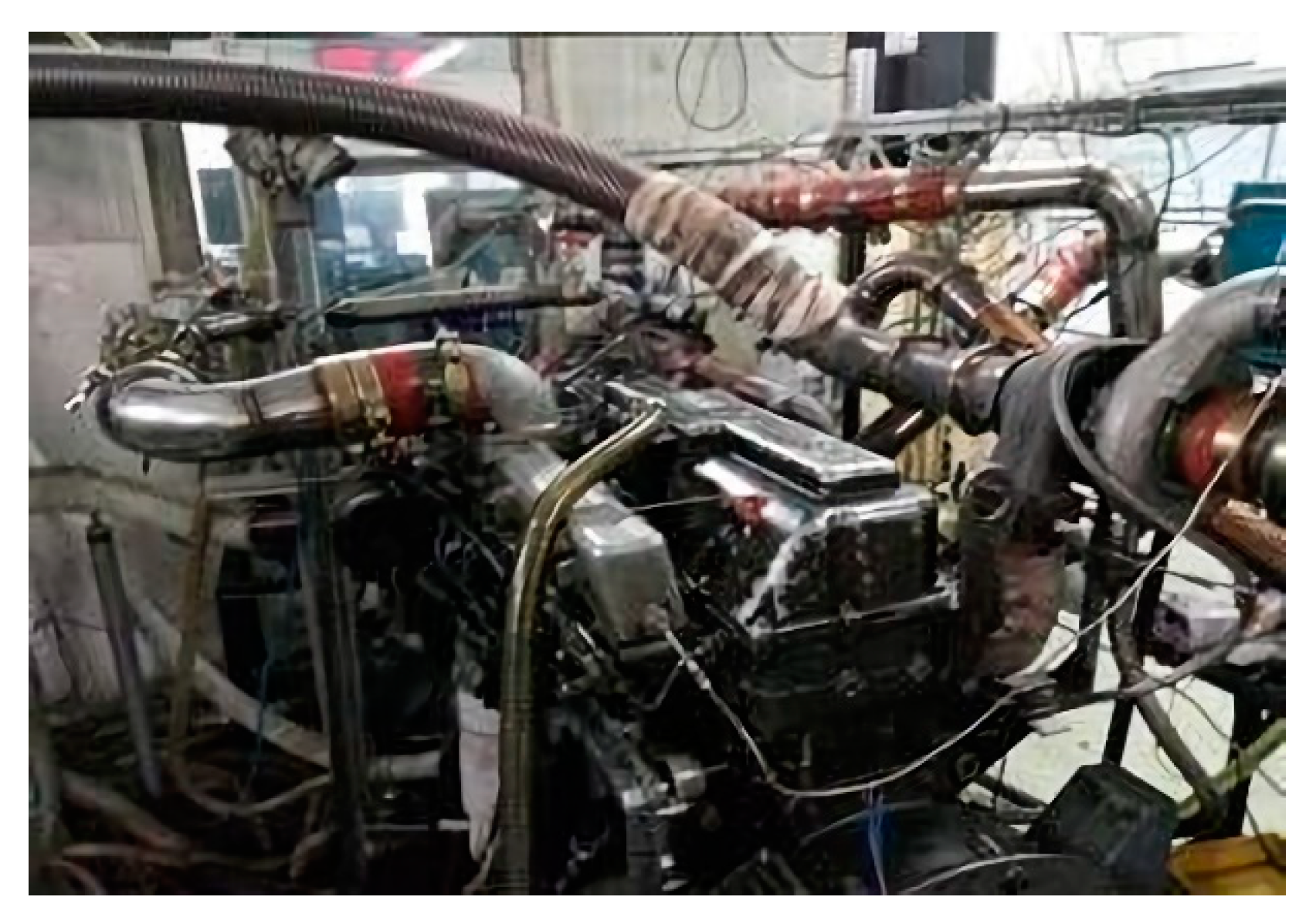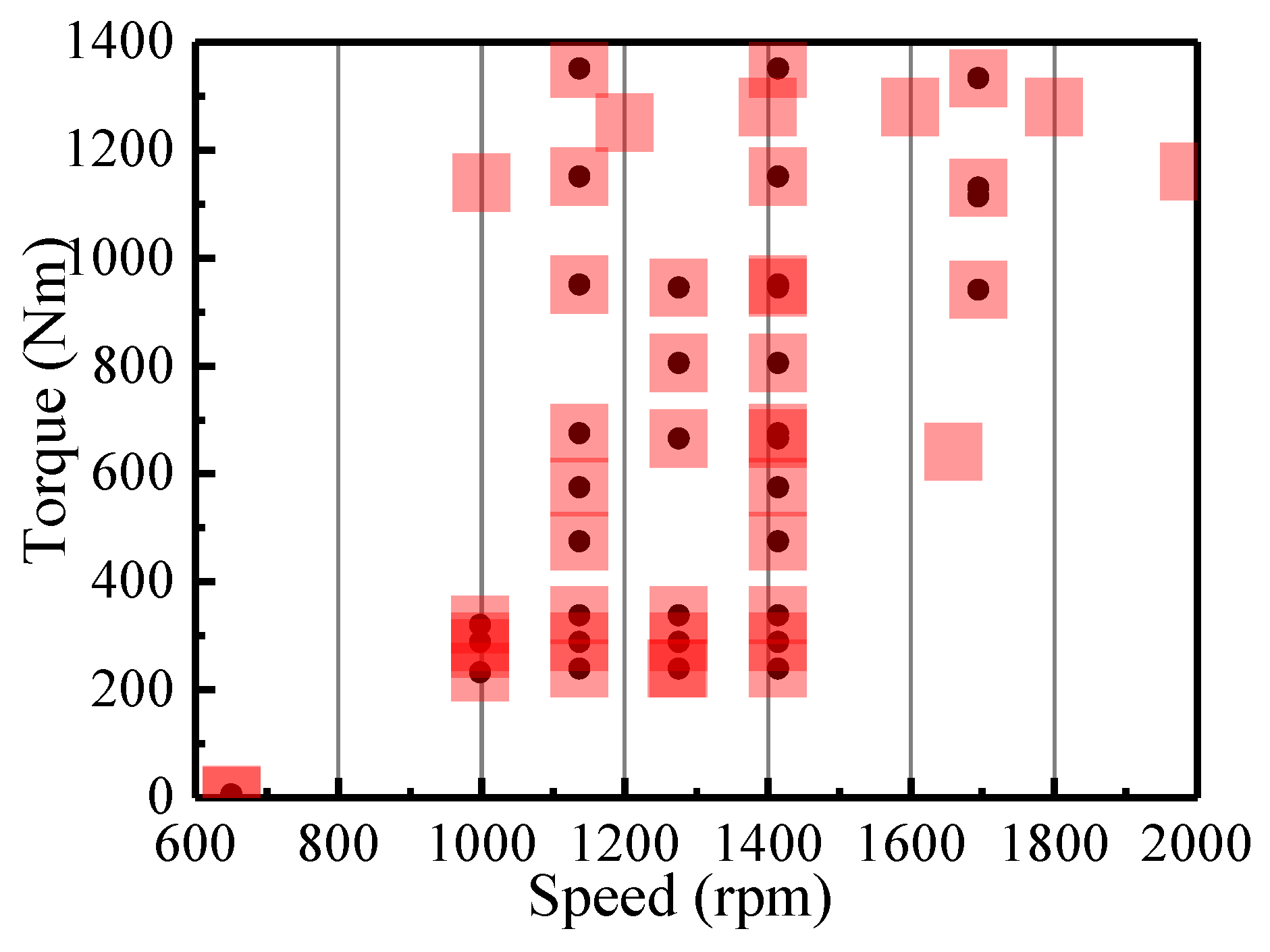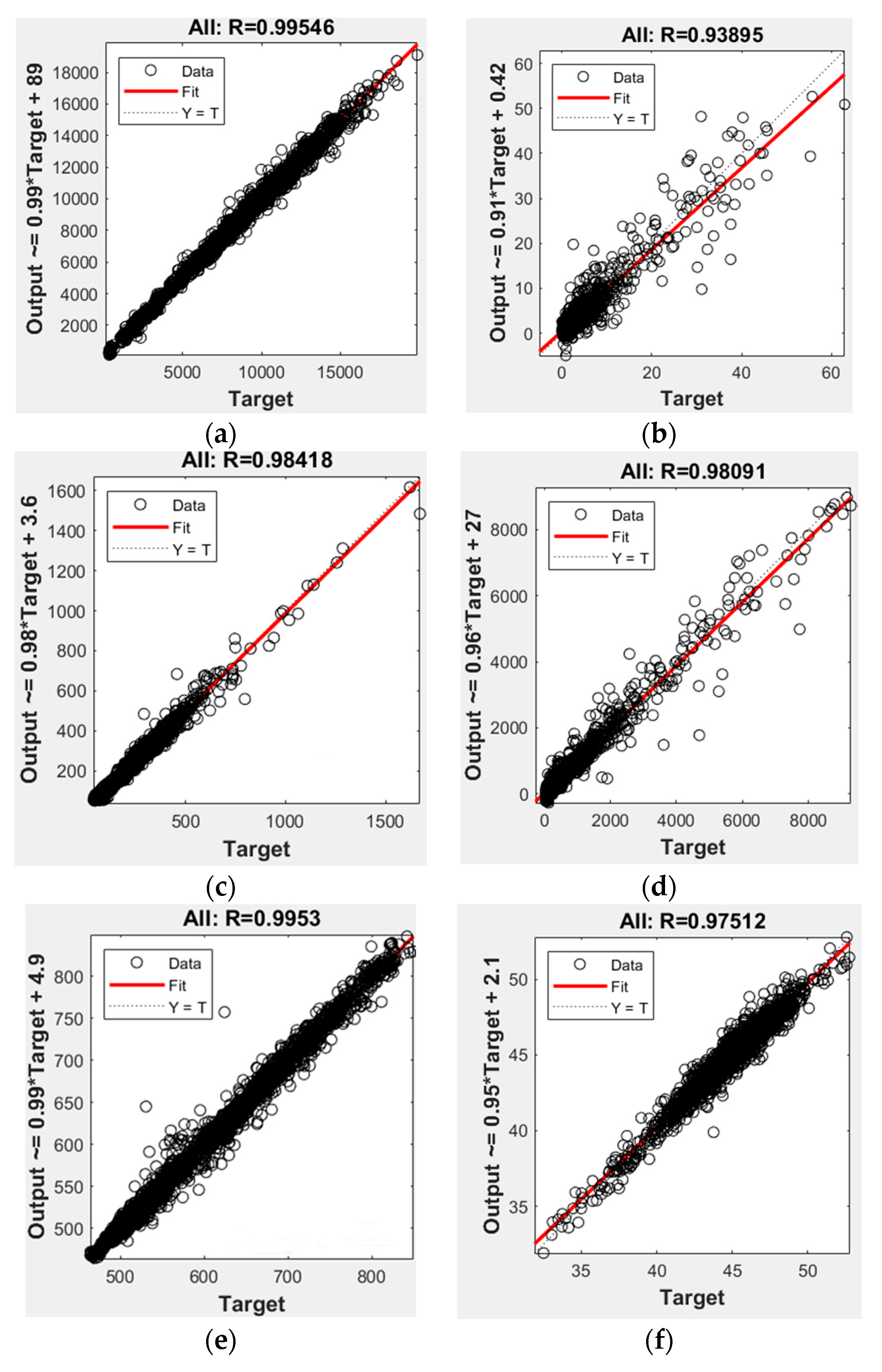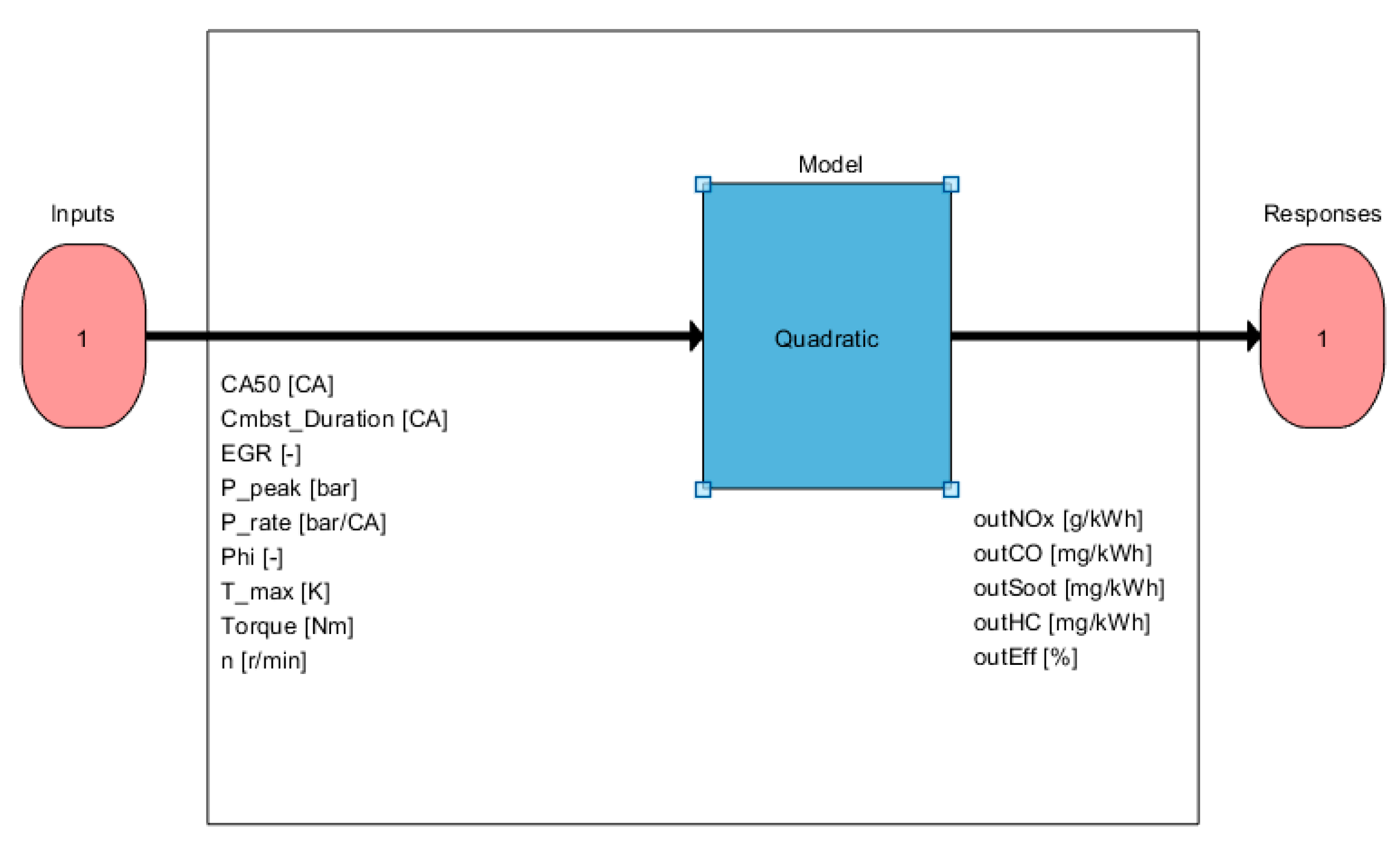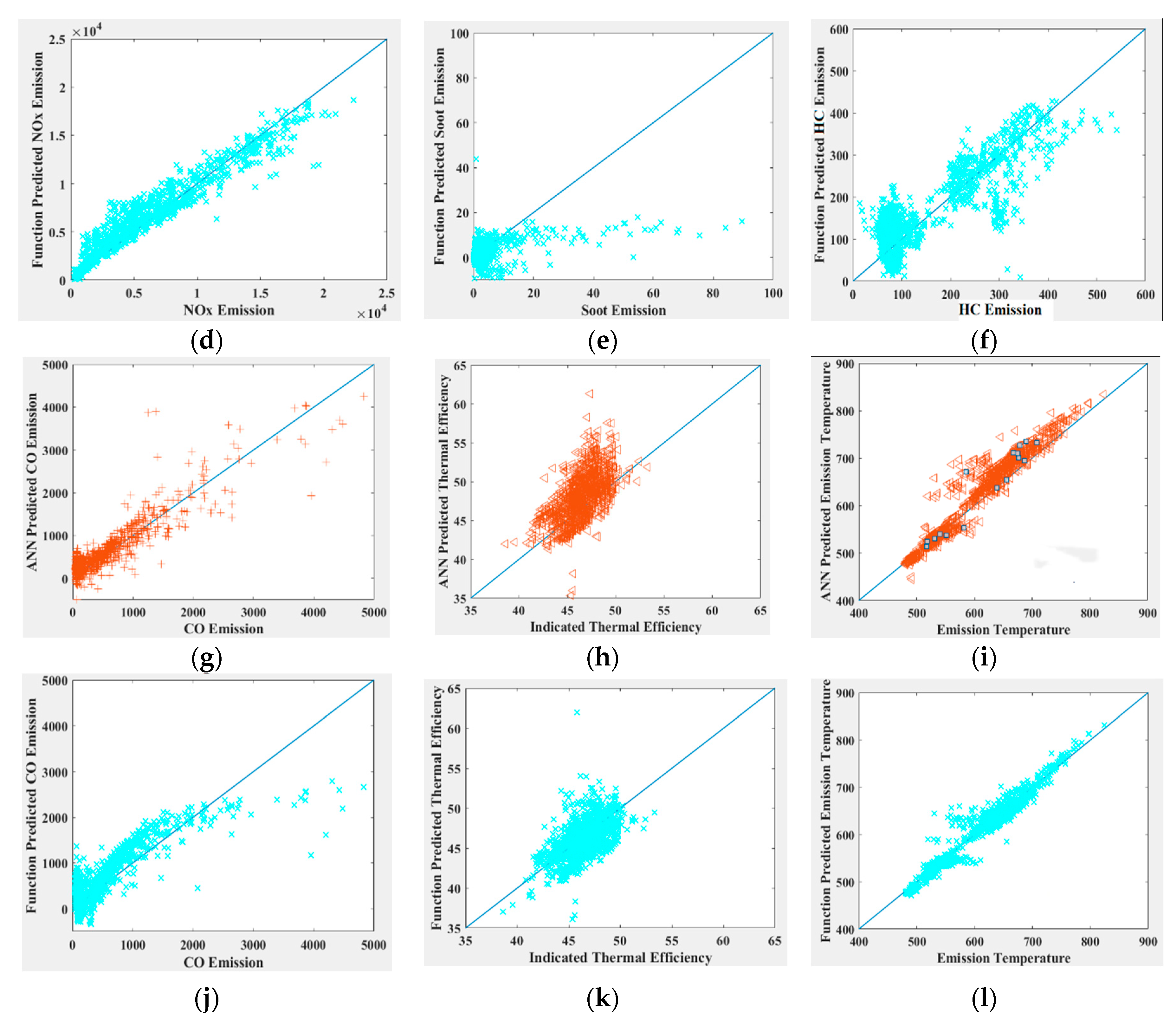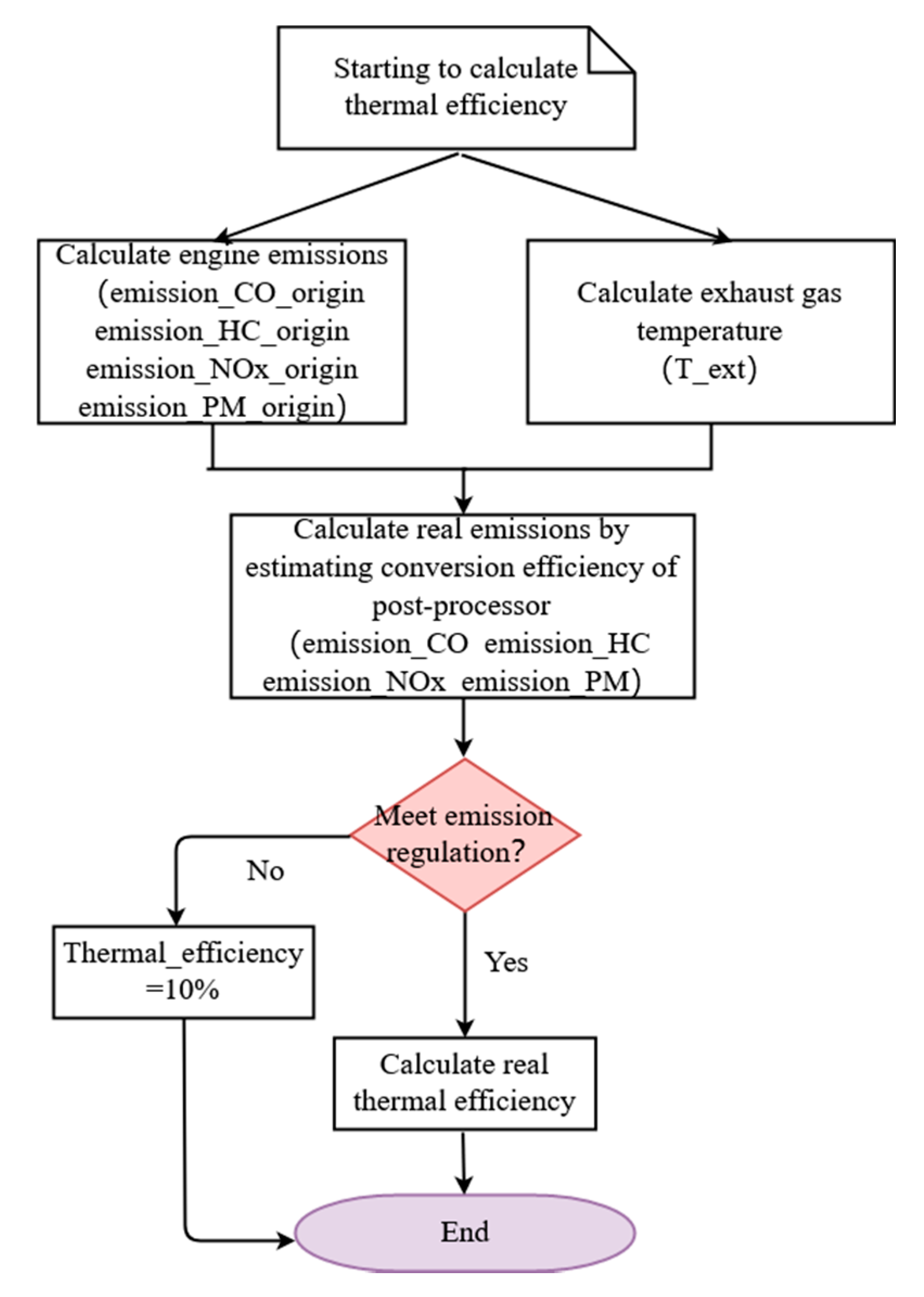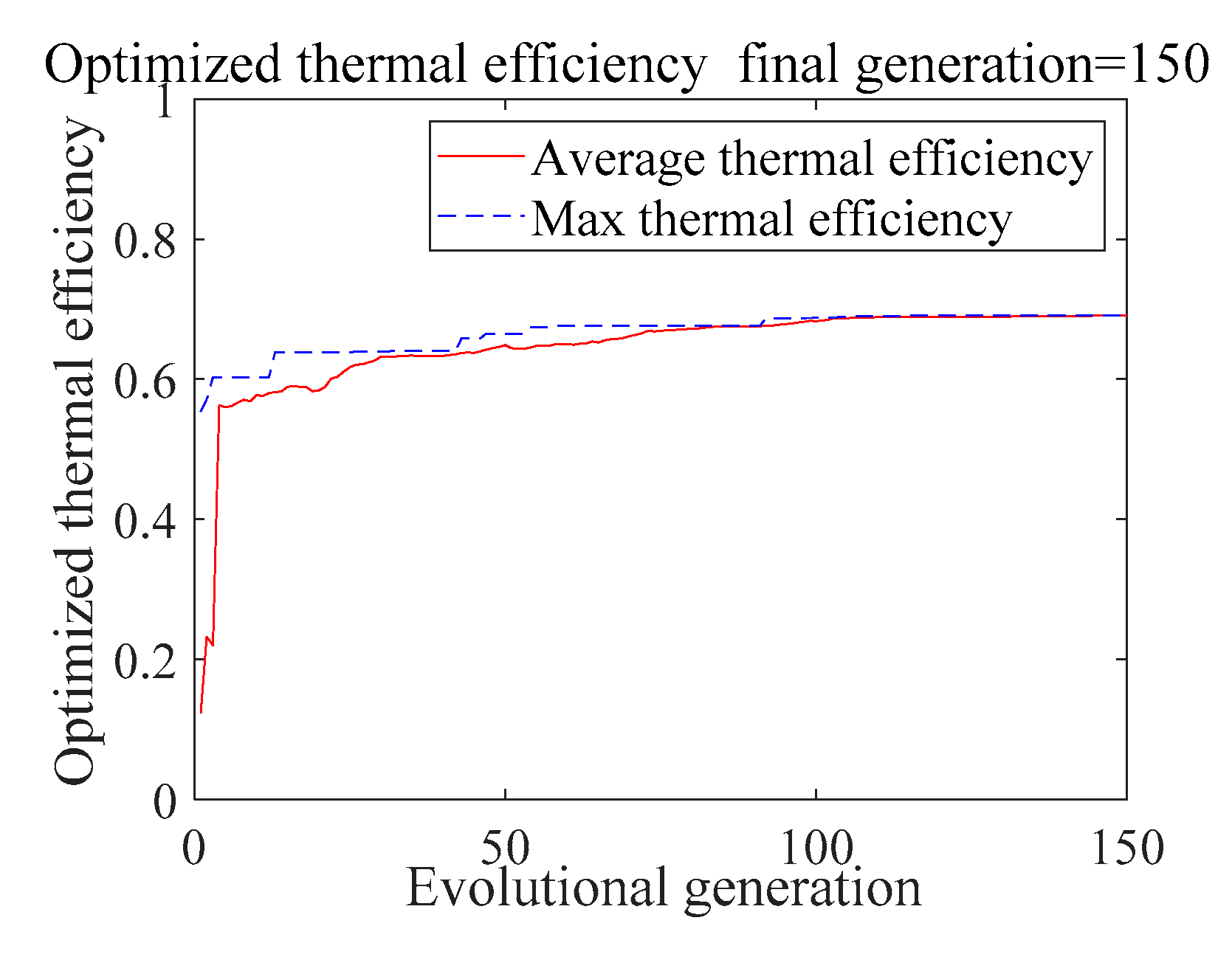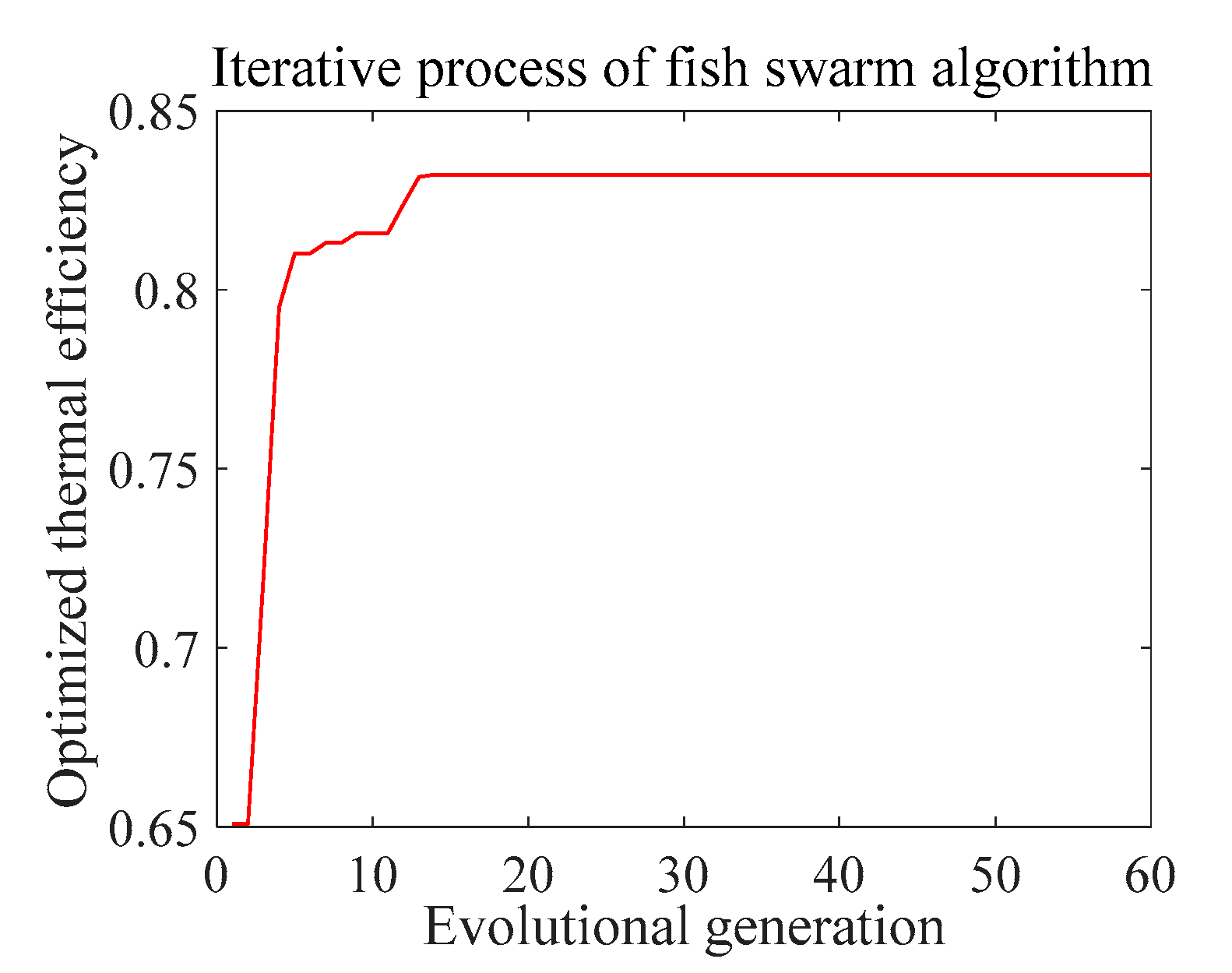In this part, two methods are introduced and used for predicting the engine emissions and performance.
Figure 3 shows the test bench where the experiments data were collected. The experiments were conducted on the modified six-cylinder heavy-duty diesel engine. The sixth cylinder was separated from the other cylinders and was equipped with independent port and directfuel injection systems (DI) to intake temperature and pressure regulating systems, an EGR system, and so on. The engine specifications are shown in
Table 1. Major physical properties of diesel used in experiments are shown in
Table 2. Over 3000 experimental data shown in
Figure 4 were tested in order to understand the engine performance under various operating conditions. About 2000 cases, marked as black dots, were used for model training, while the other 1000, shown in red squares, were kept for model validation. For each speed/load point in
Figure 2, the injection timing, EGR, intake pressure, etc., are different, and a random choice of data was used for the model building/training. Seven parameters representing the combustion characteristics were calculated based on cylinder pressure, as shown in
Figure 2. Firstly, sensitivity analysis was performed to study the influence of combustion parameters on emissions and engine thermal efficiency.
Table 3 shows the sensitivity of combustion control parameters on engine performance and emissions. For the engine emissions, two combustion control parameters with the highest sensitivity are listed, which also greatly affect the engine performance. For example, EGR and the maximum combustion temperature are mostly sensitive to NOx in this engine under different operating conditions. Therefore, EGR can be an effective method for both combustion and NOx emission control. However, EGR also greatly affects CO, which means that, although massive EGR could restrain NOx, penalty in CO would also be observed. Thus, detailed understanding on the relationship between engine performance and combustion parameters is needed.
3.2. Engine Emission Model Based on Polynomial Functions
Increasing the layers of ANN should be able to improve the prediction accuracy, however, longer calculation time is also needed, which makes it difficult to meet the quick response requirement within the control system. Another way to correlate the combustion parameters with engine performance is to build functions using a known type, such as the equation shown in Equation (1).
in which
Y represents the engine outputs, such as HC, NOx emissions, etc. The input variables are the basic operating conditions and combustion parameters described in
Figure 2. Therefore, the output can be calculated by the nine variables with a specific formula,
f. In this part, quadratic polynomials are applied, as presented in Equation (2).
With nine inputs, there would be 55 terms at most in Equation (2), considering the coupling effect of every two combustion parameters. A total of 2000 stable engine running cases were used to determine the fitting coefficients in Equation (2). This was conducted with MATLAB Mode-Based Calibration tools, and the model setup is shown in
Figure 6. Trained by these stable engine operating data, detailed formulation of Equation (2), which could calculate emissions and engine performances, can be obtained. Equation (3) shows the equation for thermal efficiency calculation, and the prediction results are illustrated in
Figure 7. It is found that the quadratic function could also provide reasonable prediction results under most operating conditions. Different from the ANN method, the effect of each combustion parameter can be analyzed with these quadratic functions directly by its partial derivatives. This means that this method is able to help making macroscopic optimization by showing the slope change of engine performance.
In order to compare the predictive capability of these two methods, another group of data, covering different and wider range of operating conditions, were used for the test and validation (
Figure 4; red squares). As shown in
Figure 8, the red marks represent the results of the ANN method, while the cyan marks are the results predicted by the quadratic function. In general, both methods show reasonable prediction results for emissions and performance at most conditions. However, combustion products and emissions with highly non-linear characteristics are still difficult to estimate, for example, soot. Besides this, ANN tends to show larger random errors for high value results, while quadratic function tends to underestimate the high value. Comparing the prediction results of NOx and other incomplete combustion products by quadratic function and ANN, the prediction accuracy of quadratic function is similar to that of ANN.
